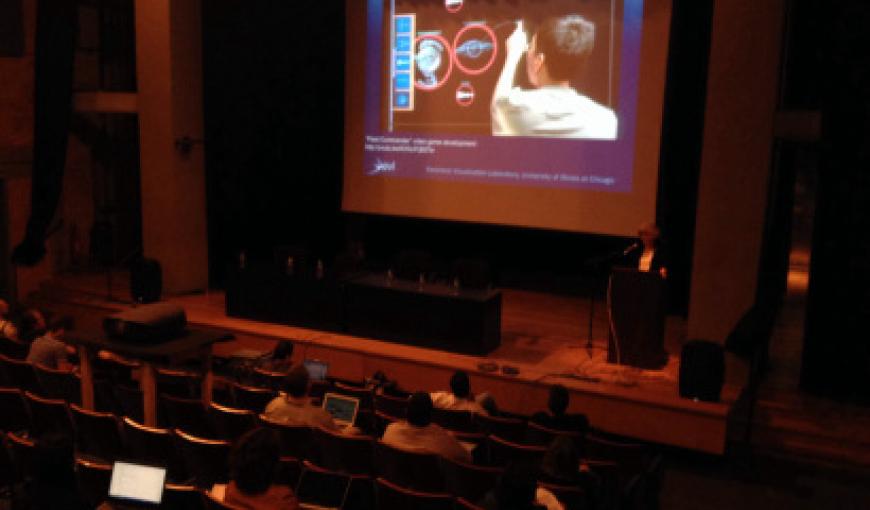Digital video challenges were the highlight of CineGrid 2014
RNP participated in the schedule of CineGrid 2014, held on August 28 and 29 in the University of São Paulo Medical School (USP). At the event, in which was discussed the ultimate digital video applications, the CineGrid founder and PacificInterface President Laurin Herr defended the search for the best resolution to meet the scientific advances in the field. “For science, having more resolution means seeing more details in larger images, which contributes to a series of experiments that defy the human perception,” he said.
Laurin Herr provides an overview about the future of video as high complexity media and reminded that, in addition to cyberstructure, it is also necessary to invest in a better use of electricity. “The use of video on mobile devices is growing rapidly and is the least efficient energy distribution form, as the data centers consume a lot of energy,” he warned. He also stressed the digital preservation importance: “If society cannot preserve its audiovisual content for future generations, we lose the basics of what we call civilization.”
8K images transmission
In the session dedicated to the Super Hi-Vision or 8K technology, the TV Globo Engineering Transmission Director Liliana Nakonechnyj reported the experience of 8Kimage transmission from Brazil to Japan during the World Cup 2014. “In addition to the best pixels with more range of color and depth, it is important to increase the number of frames per second, therefore, in the bigger picture, it is easier to see the trail when there is movement,” she said, highlighting the audio quality importance for user experience. “People increasingly want to feel participating in the event they are watching, they want to feel involved,” concluded.
The RNP Communities and Advanced Applications Manager Leandro Ciuffo showed how RNP enabled the live games transmission to Japan, through its network infrastructure, such as the Rio metropolitan network and international links. He also stressed the RNP role in technological prospecting in video applications. “We want to prospect various cultural and scientific communities with different demands on network usage, and that cannot be met by commercial providers,” explained.
For this purpose, during the CineGrid, the first meeting of the Videocolaboration Committee was held, coordinated by the Federal University of Paraíba (UFPB) Professor Guido Lemos, founder of the Digital Video Laboratory (LAViD). The initiative aims to identify the “state of the art” in digital video and generate a future vision document to guide investment in new projects in the area.
International connections
In the session dedicated to network infrastructure, the RNP Research & Development Director Michael Stanton presented the RNP current and planned communication infrastructure to support collaboration in science and applications in UHD video (4K and 8K).
Michael pointed out that, in addition to the four connections between Brazil and the United States, of 10 Gb/s, it is planned for 2015 a 100 Gb/s link who will serve South America. Until 2016, other international links are being studied to connect Brazil to Europe, between Fortaleza and Lisbon, and to Africa, reaching Luanda in Angola. “It is necessary to define an architecture of high inter-regional capacity to arrive at the global connectivity best form, i.e., so that in the future there is a network that links all the continents,” said Michael Stanton.
